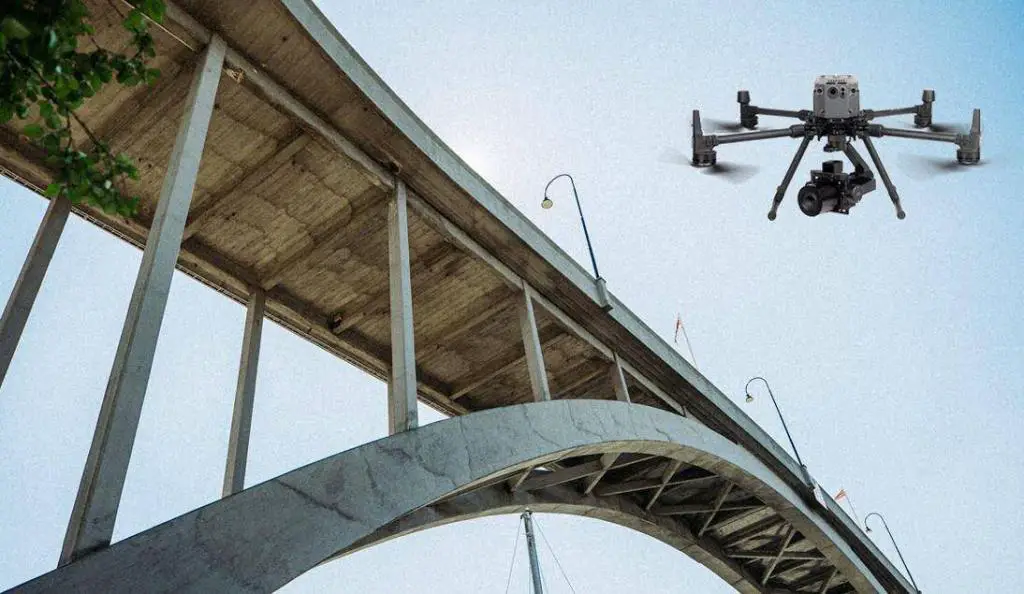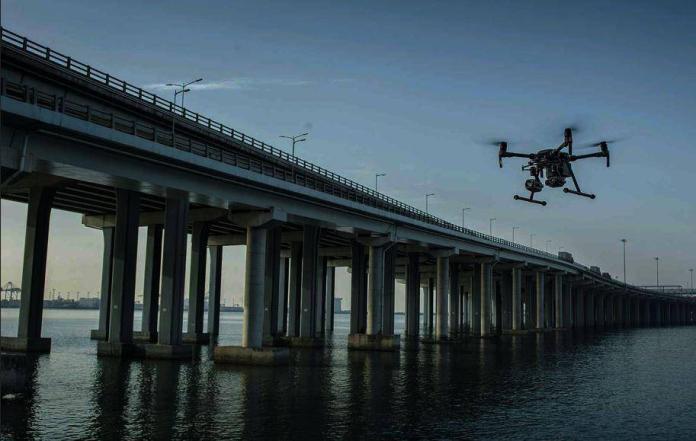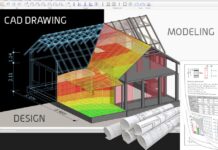All over the world, there is growing concern that environmental degradation, overloading, initial construction defects/imperfections, natural and man-made hazards, and other factors have contributed to structural deterioration and deficiencies in highway bridges. The deterioration of bridges usually occurs in response to external loads and environmental disturbance, and various maintenance plans are usually adopted in various states, countries, and jurisdictions to prolong the service life of bridges.
This article will comprehensively explore the implementation of Artificial Intelligence (AI) and Machine Learning (ML) in bridge inspections. As technological advancements continue to reshape various industries, these innovative technologies have revolutionized how we assess and maintain bridges. By leveraging the power of AI and ML, drone bridge inspection has become more efficient, cost-effective, and safer for both inspectors and the public.
According to Xia et al. (2021), the primary components of highway bridge inspection include;
- geometric parameter inspection,
- mechanical performance assessment,
- interior inspection, and
- appearance inspection.
The Transformation of Bridge Inspections
AI and Machine Learning technologies have brought about a profound transformation in bridge inspections. The traditional methods, often labour-intensive and time-consuming, have given way to automation, enabling faster and more accurate assessments of bridge conditions. This transformation has paved the way for a new era of infrastructure management, where data-driven decision-making and AI-driven analytics play a pivotal role.
It is important to note that other recently developed technologies have substantially improved the precision and effectiveness of bridge inspection work. The location of damages in bridges in three-dimensional space has been determined using a variety of technologies, including point cloud techniques, unmanned aerial vehicles (UAV), and terrestrial laser scanning techniques. Ground-penetrating radar has also been used to locate the spatial and temporal variations of concrete bridges. Infrared thermography techniques have also been utilized to inspect thermal abnormalities using thermal cameras on UAVs.
The structural state of bridges can also be evaluated using satellite-based remote sensing techniques. Persistent Scatterer Interferometry (PSI), a satellite remote sensing technique, has been used to assess the displacement of bridges. The long-term displacements of the Hong Kong-Zhuhai-Macao Bridge (HZMB) have been studied utilizing PSI and InSAR technology.
Automated Image and Data Collection
One of the key advantages of implementing AI and Machine Learning in bridge inspections is the ability to automate image and data collection. Inspectors can efficiently gather detailed images and data points without the need for risky and time-consuming under-bridge walks or expensive snooper trucks by employing drones equipped with high-definition cameras and AI algorithms. The automated process accelerates the inspection timeline and enhances the reliability and accuracy of the data collected.

AI-Driven Defect Detection
AI and ML techniques have found extensive application in diverse areas concerning structural safety, including predicting conditions and detecting damages. For instance, the neural network (NN) is well-suited for addressing large-scale data challenges as it can effectively extract multidimensional features and recognize non-linear relationships within the input data.
AI and ML algorithms analyze vast amounts of data swiftly and accurately. In bridge inspections, these algorithms can detect even the most subtle signs of wear, corrosion, cracks, and other defects that might not be readily noticeable to the human eye. Early identification of potential issues enables proactive maintenance decisions, reducing the risk of sudden and catastrophic failures. Moreover, AI-driven defect detection enhances the inspector’s ability to prioritize and focus on critical areas that require immediate attention.
Enhanced Structural Analysis
AI and Machine Learning have revolutionized structural analysis in bridge inspections. By leveraging the data collected during inspections, advanced analytics can provide a comprehensive assessment of a bridge’s overall health and performance. This includes evaluating stress distributions, load-bearing capacities and predicting the bridge’s response to different environmental conditions over time.
By gaining deeper insights into the structural integrity of bridges, engineers can make more informed and data-driven decisions about maintenance and repairs, which empowers them to ensure the safety of the bridges.
Predictive Maintenance and Lifecycle Management
One of the most significant benefits of AI and Machine Learning in bridge inspections is the implementation of predictive maintenance strategies. Through the analysis of historical data and predictive analytics, authorities can gain a thorough understanding of the deterioration patterns of bridges.
This valuable information allows for developing comprehensive maintenance plans, optimizing resources, and extending the lifespan of these critical infrastructure assets. Predictive maintenance shifts the focus from reactive repairs to proactive and strategic management, resulting in long-term cost savings and enhanced bridge performance.
Overcoming Challenges and Limitations
While AI and Machine Learning offer significant advantages in bridge inspections, there are challenges to address to ensure their successful implementation. Accurate data collection is paramount, as the data quality directly impacts the effectiveness of AI algorithms.
Additionally, training AI models requires a vast and diverse dataset to detect various bridge defects accurately. Moreover, integrating AI and Machine Learning technologies with existing inspection protocols and standards demands meticulous planning and consideration to ensure seamless adoption.

Building Trust in AI-Driven Inspections
The successful integration of AI and Machine Learning in bridge inspections relies on building trust among engineers, inspectors, and the public. Demonstrating the effectiveness and reliability of AI-driven technologies is essential to gain acceptance and confidence in automated systems.
Rigorous testing, validation, and transparency are crucial steps in proving the capabilities and accuracy of AI algorithms. Building trust will foster greater acceptance and encourage further adoption of these technologies in infrastructure management.
Advancements in AI Technology for Bridges
The future holds exciting possibilities for AI and Machine Learning in bridge inspections. Ongoing advancements in computer vision, sensor technologies, and AI-driven robotics are expected to drive further innovation. As these technologies evolve, we can anticipate even more sophisticated applications in bridge inspections, including fully autonomous systems that can operate with minimal human intervention. The potential for greater efficiency, accuracy, and safety in bridge inspections will continue to grow as AI technology progresses.
Embracing the Future of Bridge Inspections
The successful use of AI and Machine Learning in bridge inspections marks a pivotal step towards safer, more efficient, and cost-effective infrastructure management. By embracing these innovative technologies, engineers and inspectors can focus on critical analysis and decision-making, armed with comprehensive and actionable data. As AI and Machine Learning are developing and advancing, overcoming challenges, building trust, and driving further innovation will be instrumental in ensuring our bridges’ continued safety and longevity.
Conclusion
Integrating AI and Machine Learning in drone bridge inspections has ushered in a transformative era in assessing and maintaining critical infrastructure. Automation, AI-driven defect detection, enhanced structural analysis, and predictive maintenance have streamlined the inspection process, increased safety, and reduced costs. As technology advances, the potential for AI and Machine Learning in drone bridge inspections is boundless.
By addressing challenges, building trust, and leveraging data-driven decision-making, the future of drone inspections holds great promise. As these technologies continue to evolve, engineers and inspectors can embrace the opportunities presented by AI and Machine Learning to create resilient and reliable bridges that serve as vital links in connecting communities for generations to come.
References
Xia Y., Lei X., Wang P. and Sun L. (2021). Artificial Intelligence Based Structural Assessment for Regional Short- and Medium-Span Concrete Beam Bridges with Inspection Information. Remote Sens. 2021, 13, https://doi.org/10.3390/rs13183687
Karima M.M., Daglia C.H. and Qina R. (2020). Modeling and Simulation of a Robotic Bridge Inspection System. Procedia Computer Science 168 (2020) 177–185. DOI. 10.1016/j.procs.2020.02.276










